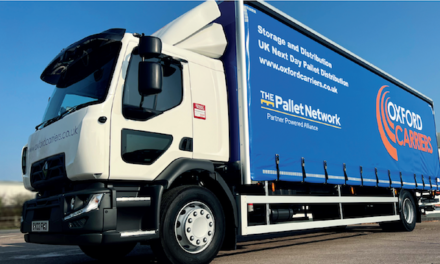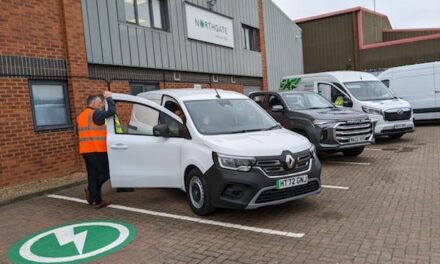A new report published today (Wednesday 10 July) highlights the immediate need for long-term planning in order to achieve transport networks across the UK that meet passengers’ needs and make it easier for them to choose sustainable travel options.
The report, titled Making Transport Fit for the Future, is the result of a collaboration between London Transport Museum, leading engineering consultancy firm Mott MacDonald, international law firm Gowling WLG and Hitachi Rail. It has been published as part of the Museum’s thought-leadership initiative, Interchange.
Calling for long-term planning in the form of three ‘building blocks’, it highlights travellers’ needs for affordable, reliable, convenient, safe and accessible transport systems. The first building block, called ‘Strong Foundations’, sets out the need for fundamental improvements to existing transport systems; ‘Visionary Outlook’ charts the course for long-term sustainability and resilience; and ‘Bold Transition’ advocates for innovation and experimentation.
By meeting these passenger needs, the report sets out how transport can better support low-carbon futures by giving people more reasons to choose sustainable travel.
Key calls to action set out in the report include the need for:
- Strong, visionary and bold leadership, supported by government commitment;
- Embracing technological advancements;
- Collaboration among stakeholders including government bodies, regulatory agencies, businesses, and communities;
- Consideration of social outcomes in future transport schemes, such as wider benefits to communities, e.g. public health.
Elizabeth McKay, Director and CEO, London Transport Museum, said: ‘This report is the result of thought-provoking and informed discussions from leading thinkers and decision-makers in the transport sector. All of which are united by strong values of social responsibility and for putting sustainability and consumer behaviours at the heart of decision making. As the world’s leading museum of urban transport, we’re thrilled to facilitate this work as part of our Interchange programme – just one of the ways we’re working to shape a greener future.’
Annette Smith, Head of Future Mobility, Mott MacDonald, said: ‘Mott MacDonald is delighted to play its role in shaping the future by working with London Transport Museum’s Interchange programme to look at the UK’s future transport needs, which follows on from our work on last year’s report which considered how to decarbonise transport. I am confident though that, if followed, the building blocks set-out in the report can lay the right foundations for transformational change that benefits the environment, society and the UK’s economy within the next decade.’
The report points to national and international case studies that exemplify innovative approaches to transportation and urban mobility:
- TfL’s Active Travel Scheme: This case study highlights Transport for London’s (TfL) commitment to promoting cycling and walking as sustainable modes of transport. By expanding cycle routes, improving safety measures, and promoting e-bike hire, TfL has seen a significant increase in daily cycle journeys, contributing to its goal of making London a more cycle-friendly city.
- Montpellier’s Free Public Transport: Montpellier’s initiative to offer free access to its bus and tram network demonstrates the city’s commitment to sustainability and social justice. By providing free public transport, Montpellier has not only tripled the number of public transport users but also improved accessibility for young people and the elderly.
- Paris’s Green Transformation: Paris’s ambitious plans to combat pollution and become Europe’s greenest city by 2030 showcase strong political leadership and a commitment to sustainability. Through measures such as expanding bike lanes, pedestrianising major roads, and implementing a “15-minute city” concept, Paris aims to reshape urban mobility and improve quality of life for its residents.
- First Bus’s Use of AI: First Bus’s adoption of AI to optimise bus schedules and prevent bus bunching demonstrates how technology can enhance the reliability and efficiency of public transport services. By automating timetable adjustments based on real-time data, First Bus has improved punctuality and customer satisfaction across its network.
- TfL’s Superloop: A project designed to enhance London’s outer transport network by connecting key areas with high-frequency bus services. It aims to reduce travel times, improve accessibility, and support sustainable travel choices, ultimately benefiting the city’s outer regions with a simple and low-cost solution.
Giles Clifford, Partner, Gowling WLG, said: ‘Transport is about people. Fifteen years ago you wouldn’t have dreamed about hiring a bike or scooter on the street or calling a taxi with a phone app. However change is inevitable so where will we all be in a further fifteen years and beyond? At Gowling WLG we work in transport, tech and the built environment around the world and it has been immensely rewarding to be involved in the discussions that have produced this report; we’ve focussed on how to get things done and what can be done, but above all on how to pick and deliver the changes that will work for everyone.’
Andy Bell, VP, GTS UK, Hitachi Rail said: ‘The UK’s transport network is the backbone of our country, and as shown by this report, there is a clear need for change. Visionary leadership and a focus on long-term planning and investment are crucial to elevate and futureproof existing transport systems. A shift in thinking is needed to prioritise technological solutions, modernise our railways and give passengers the positive experience they deserve.’
Making Transport Fit for the Future exists as a challenge to industry, transport authorities, government and policy makers to adopt a long-term, vision-led approach. It provides insights and recommendations for planning and delivering transport systems that meet the needs of tomorrow’s society.
For more information and to access Making Transport Fit for the Future,









